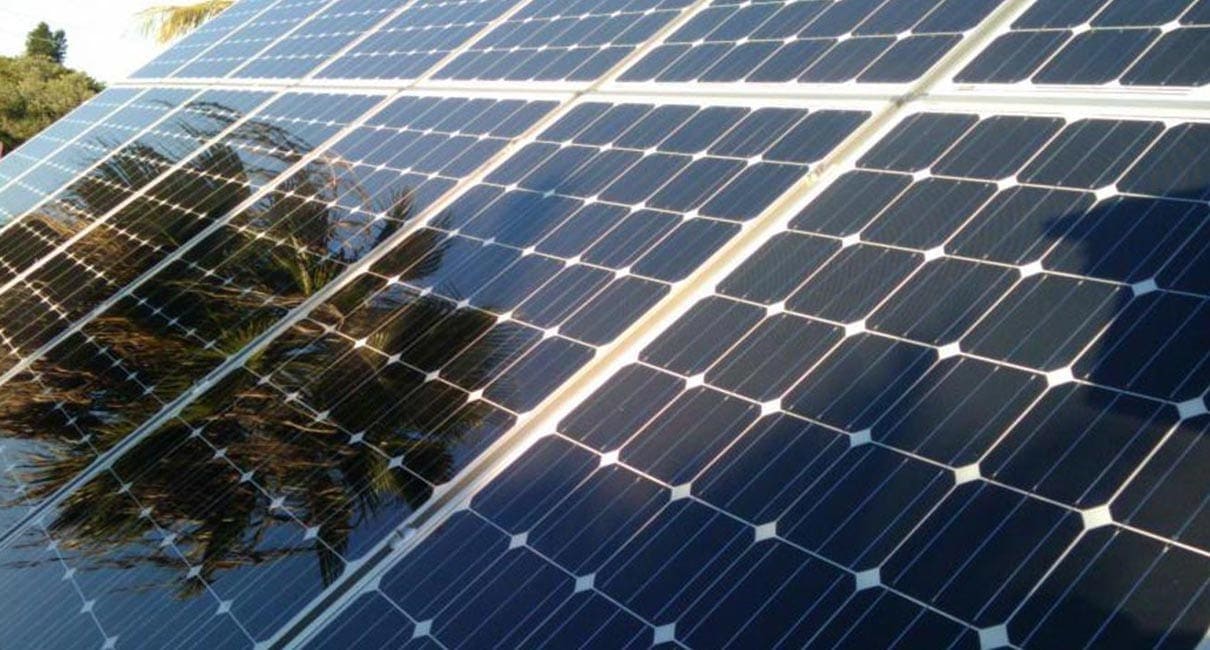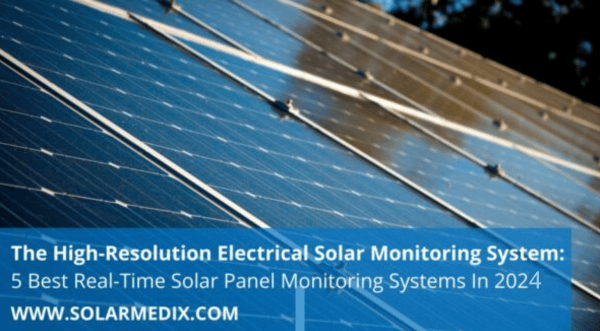There is no precise length of time that solar panels last, but there are a few signs that your panels may need to be replaced in New York. There are some reasons why you might want to consider changing your solar panels. Maybe the new panels will help save money on electricity bills, or perhaps it is just the latest technology in solar paneling for your home. Whatever the reason may be, you must first ensure that your roof is suitable for replacing existing solar modules with newer ones.
So, before you go ahead with reinstalling solar panels on roofs in New York, there are seven signs that determine whether or not your roof is suitable for reinstalling solar panels.
7 Signs Your Roof Is Unfit for Solar Panels
1. Unleveled Roof
If your roof is not level, this can cause issues with the placement and orientation of your solar panels. An unleveled roof will also make installing mounting hardware on the panels quite challenging.
To fix this problem, you will need to first get your roof leveled. This can be done by contacting a professional who can add and remove shingles and replace them with new ones.
Before the professional begins leveling out your roof in New York, they may check if all the nails are secure so they do not come loose when removing them from the rafters or trusses. Once all of the nails are secure, start removing shingles from one side until there is enough space between each rafter or truss to place a nail between two shingles. Once you have removed enough shingles, replace them with new ones, so your roof is level again.
2. Roofing Over Existing Roof Improperly
The roofing material over the existing roof must be properly inspected and prepared before solar panels are reinstalled. This is done to ensure that the new roofing system is compatible with the existing roof.
To make things easier, GAF has released a guide for roofing over existing roofs. The guidelines help builders and contractors select a roofing system that will provide the best protection for their building while maximizing its energy efficiency and lifespan.
The following guidelines from GAF for making the roof suitable for solar panels reinstallation must be followed to ensure that your roof is suitable for the impending task:
- First and foremost, the old roof should be replaced if the surface of the old shingles is bent, curled, or very badly worn, and if there are any concerns about the deck’s degeneration. Also, if there is more than one existing roof, an entire tear-off would be required.
Here are some practices for roofing over the existing roof:
- The existing roof should be perfectly flat.
- Pull out any nails or screws that are sticking out.
- Tighten and secure all asphalt shingles that are buckling, curling, or lifting.
- Replace any missing shingles; split and re-nail severely curved or warped wood shingles;
Moreover, wood shakes, tile roofs, metal roofs, asbestos shingles, roll roofing, low slope membrane roofs, insulation with direct application, and decking materials other than wood (unless they are authorized specialty decking) are all incompatible with GAF asphalt shingles.
3. Stress on the Roof’s Surface

If the stress on the surface of your roof is too great, it can cause damage to the shingles and shakes. This can also cause stress cracks in the plywood or OSB sheets, which will make it difficult for the installation expert to install mounting hardware on them. To fix this problem, they might need to relieve some stress by adding more support underneath the roofing material.
If there is not enough support underneath your roofing materials, more joists or plywood sheets should be added under them. If there is too much stress on one side of your roof, you may also need to cut out some parts of your rafters or trusses so that they can redistribute the weight evenly across both sides.
What Is the Difference Between Structural Integrity and Wind Load Rating?
Structural integrity is whether or not your roof can support the weight of all the materials used in your solar array installation. The wind load rating is whether or not your roof can withstand high winds without causing damage to your home. If you have a metal or tile roof with a low profile, then it likely has a low wind load rating. If your roof has a lot of overhang and exposed beams, it likely has a higher wind load rating than the average metal or tile roof.
4. Rotting Wood or Mold Under the Shingles
If there is mold or rotting wood under your roof, you must immediately call a professional to replace it before considering reinstalling solar panels. This will not only make reinstallation easier but also ensure that they stay secure on your roof for years to come.
When replacing rotting wood or mold under the shingles, the expert will most likely use a hammer and chisel to remove any loose pieces of wood so that they can see whether or not there is any rot underneath them. If there is rot, then it should be replaced with new wood before installing solar panels on top of them. If there are no signs of rot, you can continue getting solar panels reinstalled on top of them without worrying about them falling off your roof in the future.
5. Cracked Flashings or Sealants
When reinstalling solar panels on your home, the technician may have noticed some holes in the flashing or sealant on your roof. If this is the case, it can cause problems with how well your solar panels are sealed and how long they will last. If there are holes in your flashing or sealant, water can get inside the panels and cause them to fail prematurely. To fix this problem, the professional must replace all the flashing or sealant on your roof.
To do this, they will first find out what type of flashing or sealant is used on your home’s roofing materials. Once this is determined, they will put some new pieces that match the ones that are currently on your home’s roofing materials.
When purchasing new pieces of flashing or sealant, remember to ask the professional to check if the new pieces fit securely into place by bending them at a 90° angle before installation. After installing new flashing or sealant onto your home’s roofing materials, it is essential to check for any gaps between the two pieces before reinstalling solar panels on the roof in New York.
6. Clogged Gutters and Chimneys
If your roof does not have gutters, you must install them before reinstalling solar panels. The purpose of gutters is to keep rainwater from going over the edge of your roof and onto neighboring properties or your home through the chimney. Gutters also prevent water from melting snow from entering your attic and causing damage to your roof and ceiling.
Unfortunately, clogged gutters and chimneys can cause severe problems for solar panels. Too much water flowing over the edge of your roof can weigh down the panels and cause them to come loose from their mounts or even break off altogether. In addition, if there is too much moisture in your attic, mold may start growing on top of the panels, significantly decreasing their efficiency. Moreover, this may result in leaks in the attic, where all the wiring is located.
To prevent this from happening, make sure that you clean out all of the gutters and chimneys once a year so that they do not clog up again later on down the road when installing new solar panels.
7. Unsuitable Materials or Construction Type
If your roof is constructed out of materials that are not suitable for solar panels, then you will need to get this problem addressed before reinstalling your solar panels. For example, if you have a metal-roofed house and want to install solar panels, you will need to add a layer of insulation under the metal roofing before installing the solar panels.
If you do not want to add insulation under your metal roofing, then you can choose another material for your roof that is better suited for solar panel installation. For example, if you have wood siding in your house, this would be an excellent choice for reinstalling solar panels since wood is an insulating material that does not conduct electricity or heat very well.
You can also ask the professional to use asphalt shingles instead of metal ones if you plan to get solar panels reinstalled on your home’s roof soon because asphalt shingles are highly insulating and also resistant to weather damage.
How to Decide Whether to Repair or Replace an Unsuitable Roof for Solar Panels Installation

The question of whether or not to repair or replace your roof gets asked a lot. This is because homeowners want to know what their options are and how each of those options would impact the value of their home. The answer to this question depends on a few factors, including but not limited to the following:
- Whether or not your roof is old. If it is still in relatively good condition, then you may be able to repair the roof instead of replacing it altogether. This will save you money in the long run because it will decrease the time you have a leaky roof or one that does not work correctly. However, if your roof has been around for a long time, you might find that it has damage that cannot be repaired and that it would be better to replace it rather than repair it.
- The severity of any damage your roof has sustained in the past. If the damage is significant enough that you would need to replace rather than repair your roof, then you should consider doing so before reinstalling solar panels. If you do not replace your roof when reinstalling solar panels, they could also end up leaking—which would be not only a safety hazard but also a waste of money, as well as being unpleasant during certain times.
In any instance, it is recommended to ensure that the professional is following the guidelines provided by GAF.
Key Takeaways
Even after the initial investment, using solar panels to generate power for your home is a great way to save money and protect the environment. However, if your roof has been irreparably damaged by roof leaks or shingles blowing off, you may not be able to install solar panels. Consider the seven signs mentioned above to mean that your roof is unsuitable for reinstalling solar panels.
If you can relate to all seven of these problems, there is no need to despair—look into a complete re-roofing job rather than just repairing the damage done by time and the climate.
Given that there are innumerable variations in the shape, size, and form of roofs, you should enlist the help of a qualified solar reinstallation service to inspect your roof and give you advice on whether the roof of your new home is a suitable match for your new solar panel system. A professional opinion can also tell you how much of the available roof surface can be utilized for solar panel reinstallation.
Feel free to reach out to us if you have any questions. If you’d prefer, we can give you a no-obligation quote on your project. Our team at SolarMedix.com has served the New York and New Jersey areas for nearly two decades, during which we’ve completed nearly 6,000 projects.
You can reach us at 732-785-4814 or book a consultation online.











